When it comes to addressing employee disciplinary actions, it's essential to approach the situation with clarity and professionalism. A well-structured letter can effectively communicate the necessary information while maintaining a respectful tone. In this article, we'll explore some key elements to include in your disciplinary action letter, ensuring that both employers and employees understand the expectations and consequences. So, let's dive deeper into crafting the perfect letter template that can guide you through this challenging process!
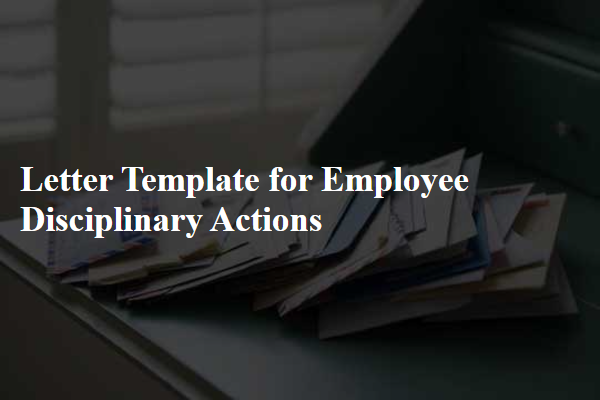
Clear introduction: Purpose and context.
Employee disciplinary actions may arise from breaches of company policies or unsatisfactory performance metrics. Documenting these actions ensures compliance with human resources protocols and maintains a transparent workplace culture. The formal notice serves to inform the employee of specific concerns regarding behavior or performance, detailing the context of the issues observed. It presents an opportunity for the employee to understand the implications of their actions, while outlining the corrective measures expected to be taken within a specified timeframe. Each disciplinary action is conducted in adherence to organizational guidelines and relevant labor laws, ensuring fairness and accountability.
Detailed explanation: Specific incident and policy violation.
Employee disciplinary actions address policy violations in the workplace. For instance, a specific incident might involve an employee showing up late on three occasions within a month, breaching the company's punctuality policy, which mandates that employees arrive no later than 9 AM. This repeated tardiness disrupts the workflow, affecting team productivity and morale. The company's employee handbook outlines the expectations for attendance, including the consequences of continued violations, such as written warnings or potential termination. Documentation of the incidents, including dates and times, adds clarity to the situation, ensuring that the employee understands the seriousness of the infraction. Clear communication of the possible next steps in the disciplinary process is crucial to uphold workplace standards and encourage improved behavior.
Evidence presentation: Supporting facts and documentation.
Employee disciplinary actions require a thorough presentation of evidence to ensure fairness and clarity. Constructing a comprehensive dossier involves gathering supporting facts, such as timestamps of incidents, witness statements, and any relevant emails or documents that illustrate the nature of the violation. These materials should be organized methodically, perhaps by date or type of incident, to provide a coherent narrative outlining the employee's behavior. Specific details, such as the company policy (e.g., Code of Conduct, Attendance Policy) that was breached, will bolster the case. In addition, performance metrics or prior warnings (if applicable) will contextually amplify the severity of the situation, promoting a clear understanding of the disciplinary measures being considered. The goal remains to enable a transparent and objective review process to uphold workplace integrity.
Consequences: Disciplinary actions and ramifications.
Disciplinary actions in the workplace serve to address employee misconduct and ensure adherence to organizational policies. Consequences can vary significantly, ranging from verbal warnings (typically documented for future reference) to written reprimands, suspension, or even termination, depending on the severity of the offense. For instance, in a corporate environment, repeated tardiness may result in a formal warning after the third occurrence within a six-month period. More serious violations, such as harassment allegations investigated by HR, could lead to immediate suspension while the matter is reviewed. In cases of theft (affecting company assets), immediate termination may be the outcome. Employees are encouraged to review the employee handbook, which outlines specific infractions and corresponding consequences, ensuring transparency in the disciplinary process and fostering a culture of accountability.
Closing statement: Expectations and opportunities for improvement.
During the disciplinary action process, it is essential to emphasize the expectations regarding employee conduct and performance. Clear benchmarks should be established based on company policies, such as timeliness, professionalism, and adherence to project deadlines. Opportunities for improvement must be outlined, encouraging employees to engage in additional training sessions or mentorship programs offered in the workplace, particularly those scheduled quarterly at the corporate office. Regular follow-ups should be conducted to assess progress and provide constructive feedback, fostering growth and accountability. By focusing on these key areas, employees are empowered to make positive changes that align with the organization's values and enhance overall productivity.
Letter Template For Employee Disciplinary Actions Samples
Letter template of employee disciplinary action for attendance violations
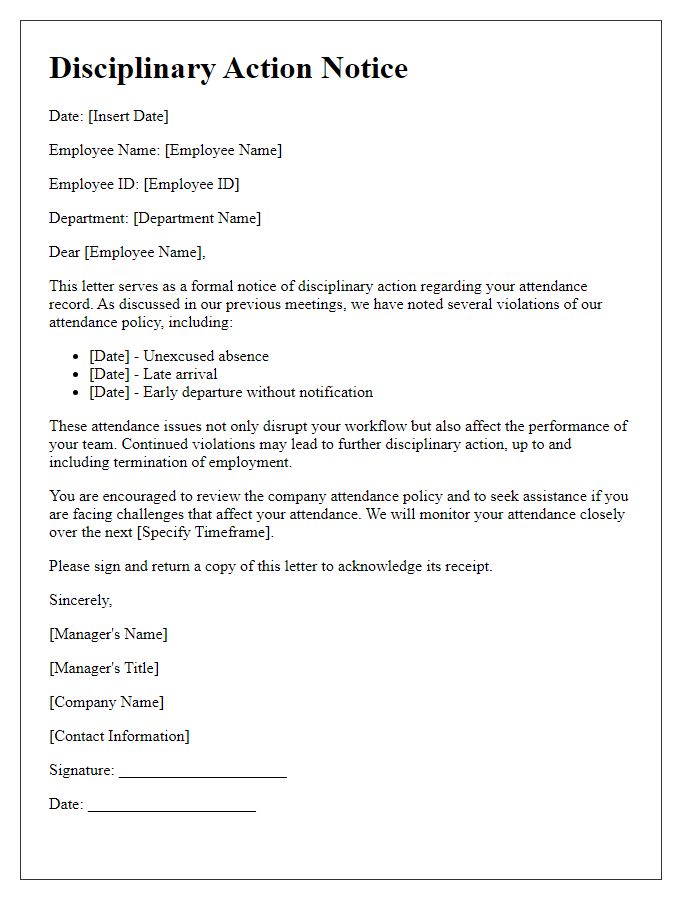
Letter template of employee disciplinary action for harassment allegations
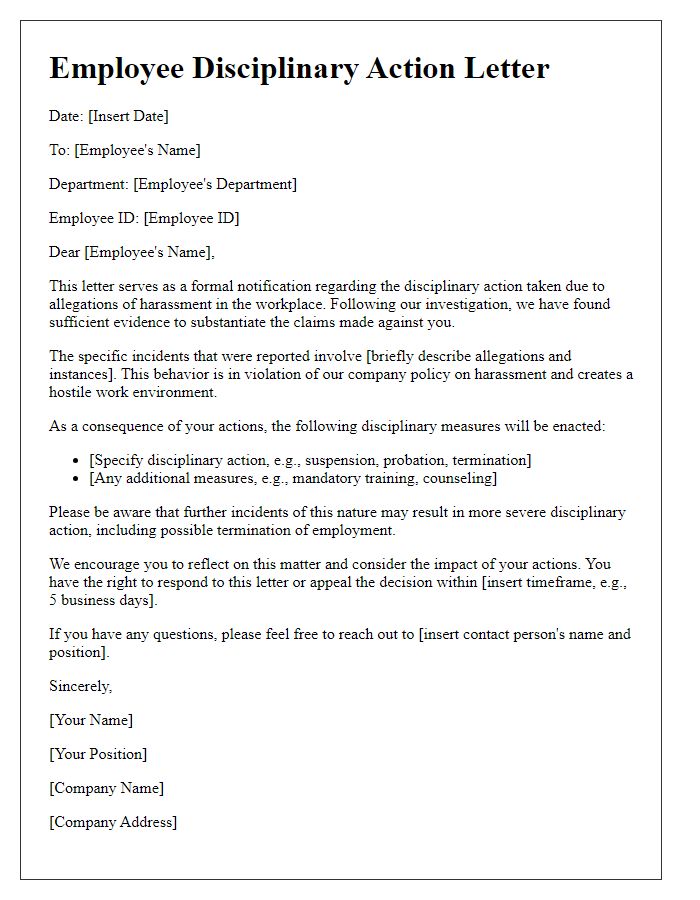

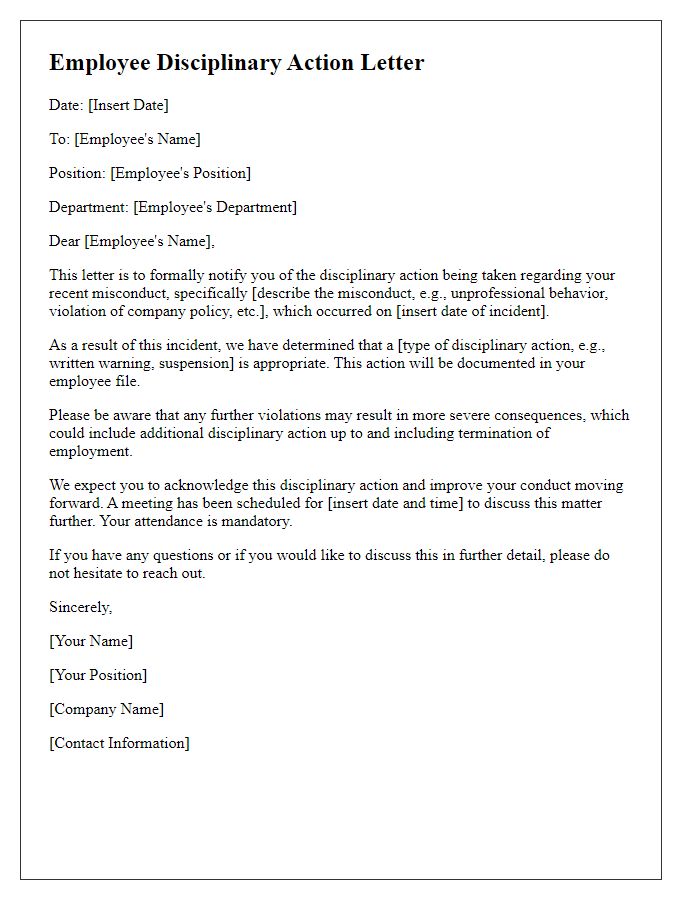
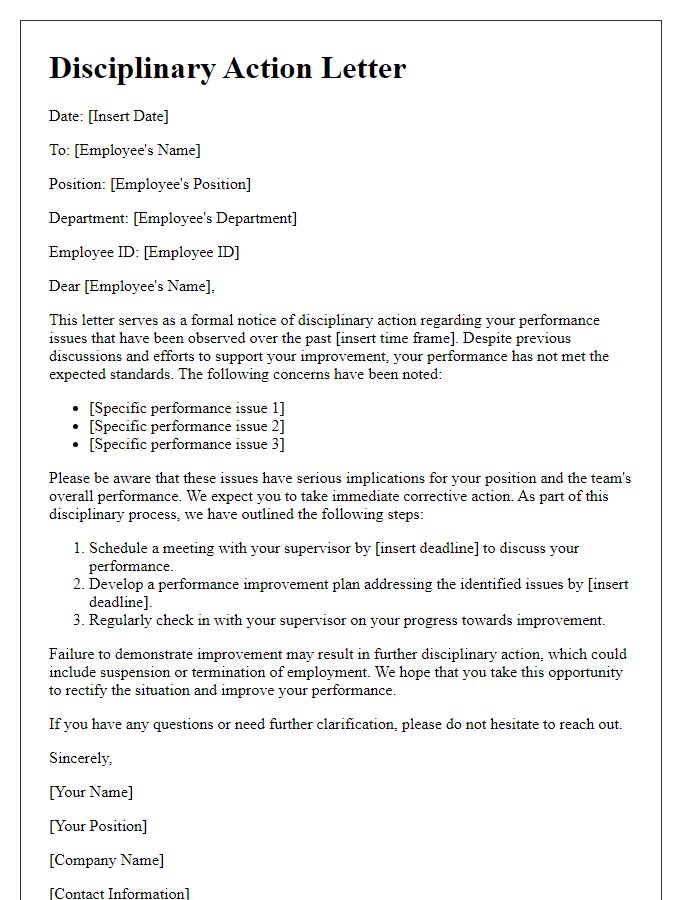
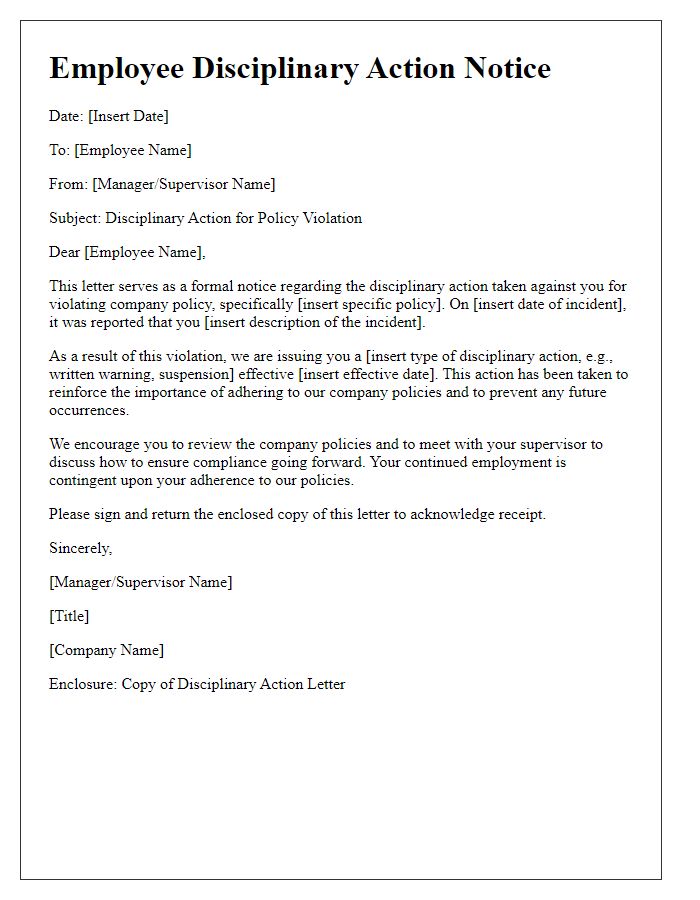
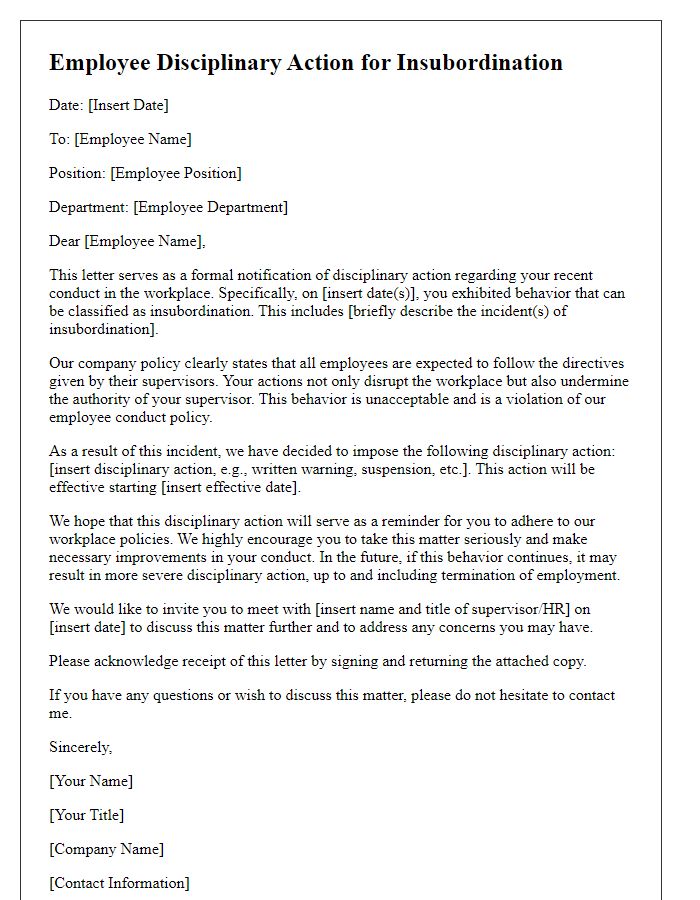
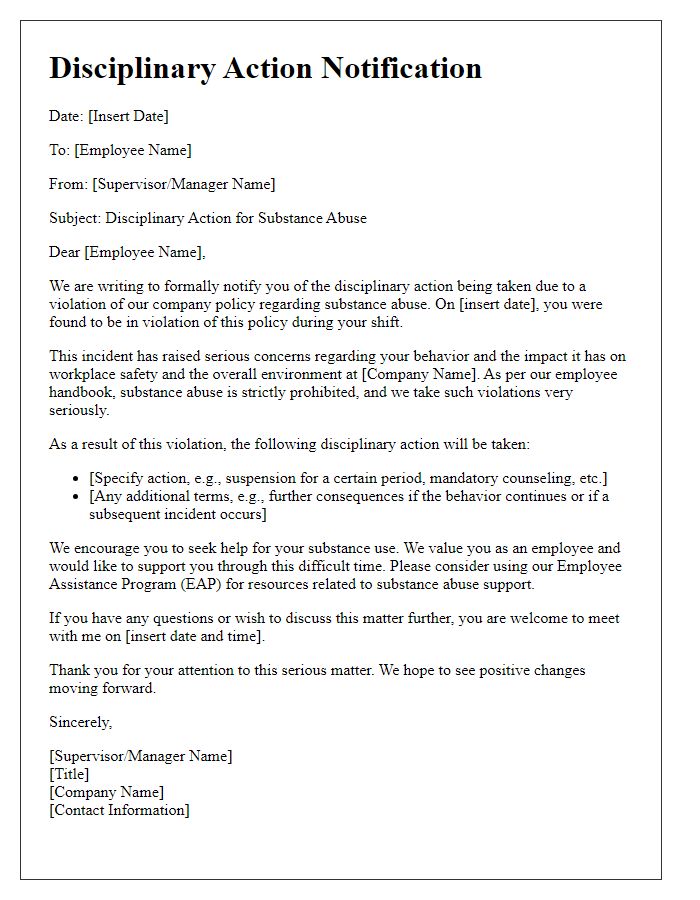
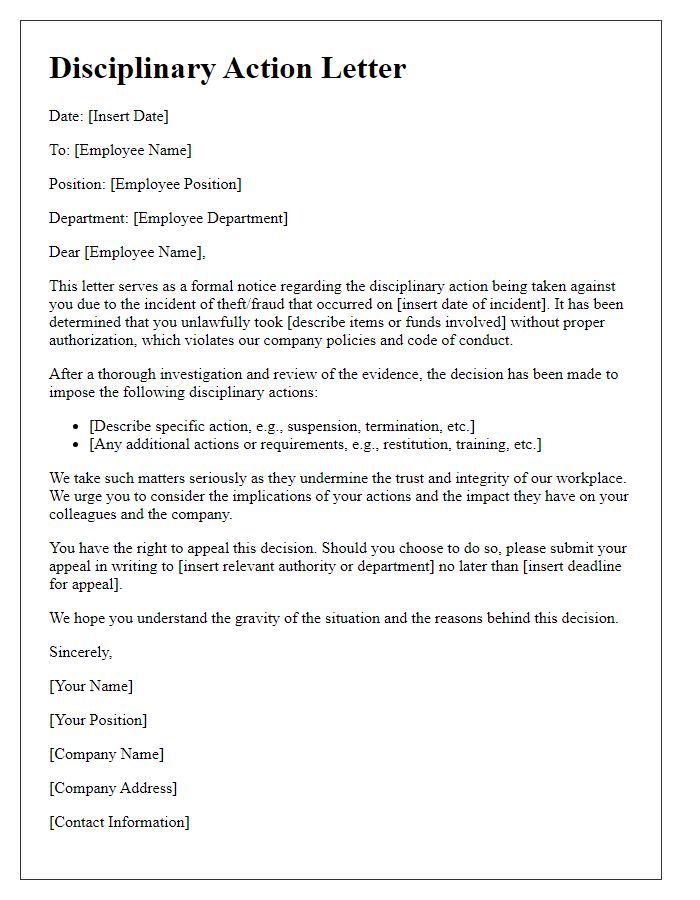
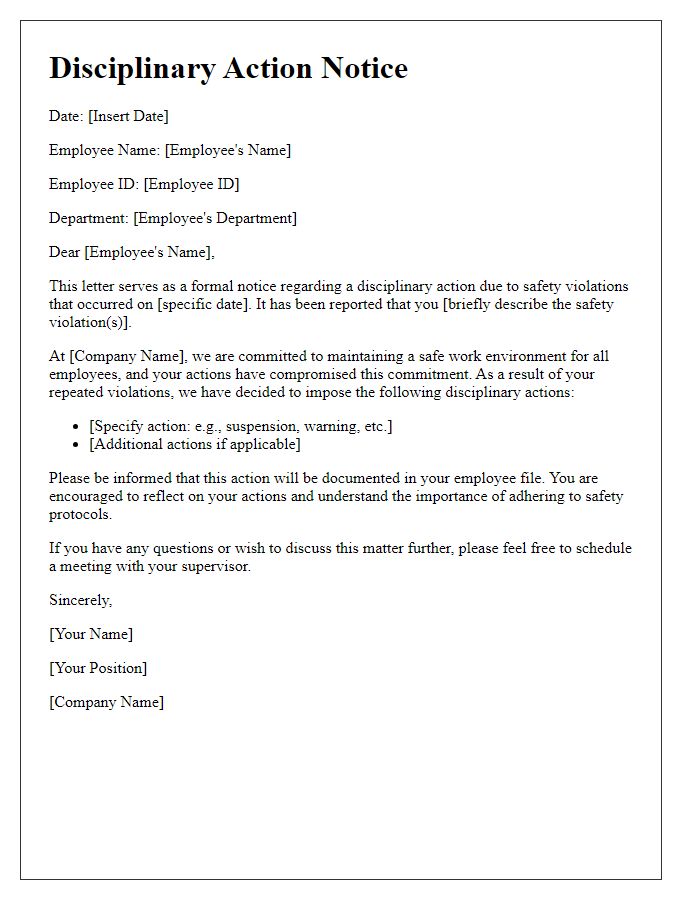
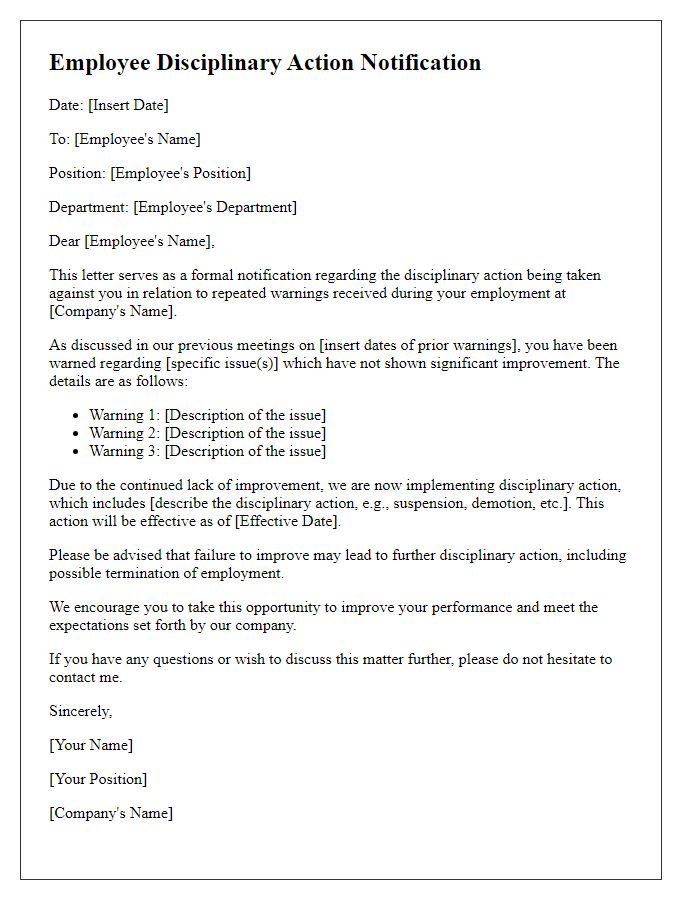


Comments